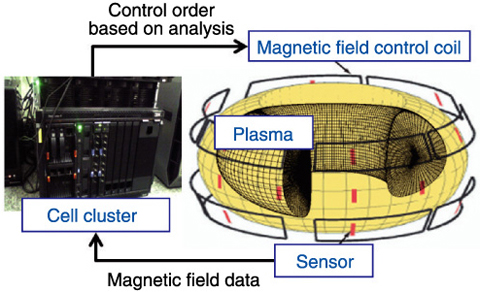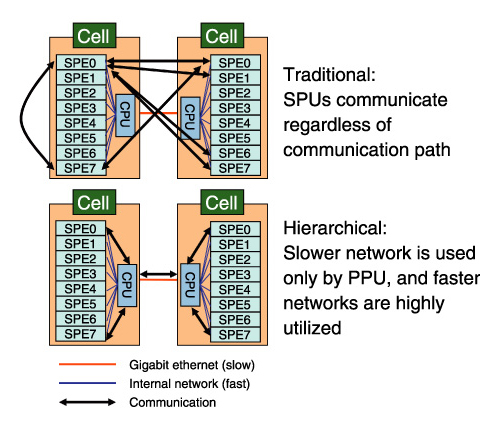
Fig.12-4 Illustration of plasma stabilizing system

Fig.12-5 Overview of Cell cluster and hierarchical parallelization
The International Thermonuclear Experimental Reactor (ITER) project, which is being led by seven countries including Japan, is testing the feasibility of a tokamak type fusion reactor for burning plasma for long periods. It has been noted that the operation efficiency of a tokamak fusion reactor can be degraded by the existence of plasma instabilities. One of the encouraging methods for plasma stabilization is that of control of the plasma by changing the external magnetic field when signs of the plasma instabilities appear (Fig.12-4). However, the period between the time the signs appear and the time limit to stabilization is quite short (such as only five seconds, even in a reactor as large as ITER). Thus, fine control based on accurate plasma state analysis has been considered technically challenging, because it requires higher processing power than what is provided by today’s supercomputers. Recently the computational power of supercomputers has been increased by connecting many CPUs. This method is suitable for reducing calculations from one week to one day. However, it cannot be adapted to a one minute calculation, because communication overheads can become large. Moreover, supercomputers are not suitable for use in constant monitoring, because many users share them and we cannot exclusively use them for monitoring use.
We introduced the Cell processor into our computing environment to obtain more processing power beyond that of supercomputers. Moreover, Cell processors are highly cost-effective, and this enables us to build a dedicated computing environment. On the other hand, it also requires sophisticated programming techniques for high performance.
As a first step, we focused on the eigenvalue solver, because it consumes the most computational time. In order to achieve high performance with the Cell processor, we reduced communication time by introducing a hierarchical parallelization technique (Fig.12-5). Furthermore, we developed a novel eigenvalue solver that only requires mathematically inevitable communication. As a result, our eigensolver performs well, with high computational stability, although there is a trade-off between these qualities in traditional methods. Taking these techniques together, we can complete the eigenvalue within one second. We believe that we may open the way toward real time plasma stabilization. Additionally, our newly developed method can be applied to other applications in the nuclear field.
This research is based on Grant-in-Aid for Scientific Research No. 21760701 from the Ministry of Education, Culture, Sports and Technology of Japan (MEXT).